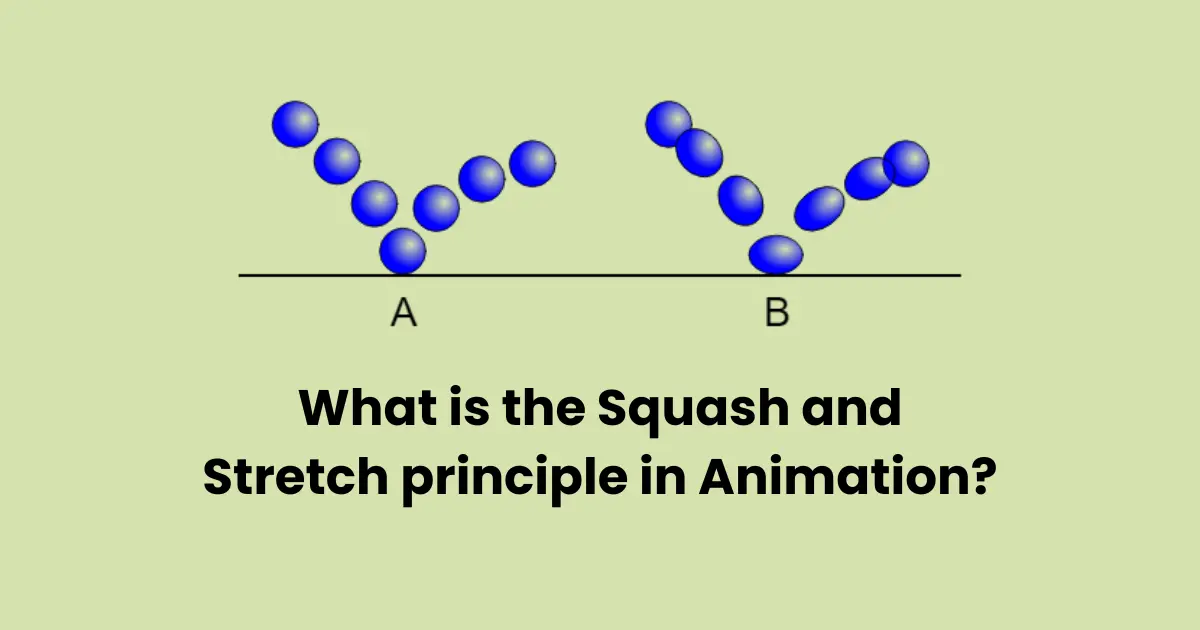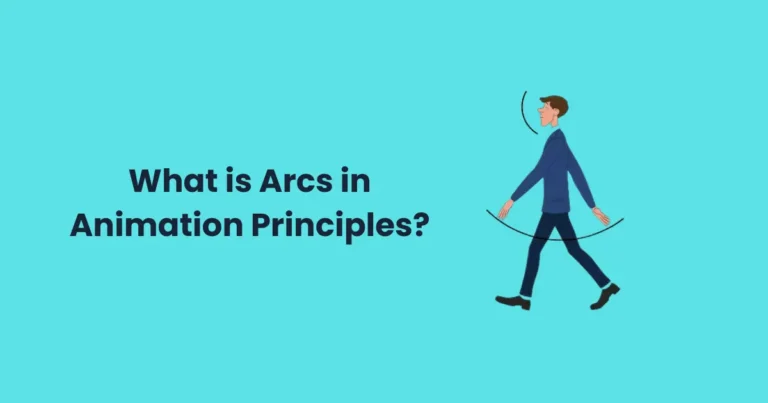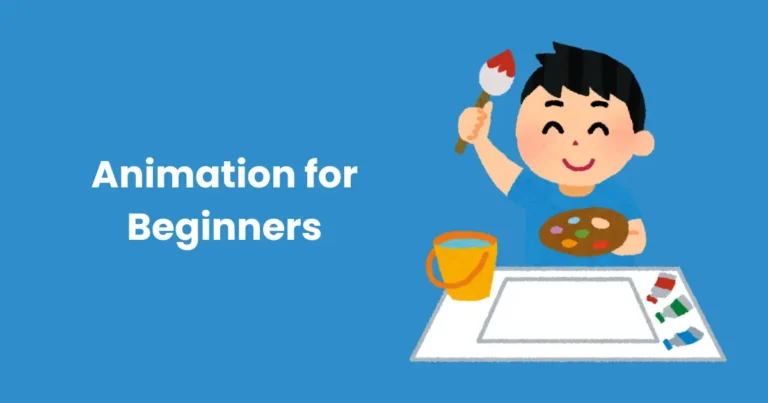What is Squash and Stretch principle in Animation? | Ultimate guide in 2025

Contents
In animation, squash and stretch is one of the most essential principles that bring motion and energy to animated characters and objects. It’s the technique of distorting a shape to give it the illusion of flexibility, weight, and movement. Whether it’s a bouncing ball, a character leaping through the air, or an object being impacted by a force, it provides that extra layer of realism, making the action feel more dynamic and believable.
When applied properly, squash and stretch create the sense that an object is realistically responding to external forces. For example, when a rubber ball bounces, it compresses (squashes) upon hitting the ground, and then stretches as it rebounds into the air. This deformation helps convey important details like weight, speed, and momentum.
In character animation, squash, and stretch plays an important role in giving characters personality. It allows for exaggerated movements, which can make a character feel more energetic, playful, or expressive. Without this principle, animation would appear stiff and lifeless, lacking the fluidity and vitality that makes it compelling to watch.
At its core, squash and stretch is about balance—too much use of this principle can make things look overly exaggerated, while too little can make them seem rigid and unnatural. As an animator, understanding the subtleties of how to apply this principle can greatly enhance the emotional and visual impact of your work.
What is Squash and Stretch?
Squash and stretch is an animation principle that describes how an object or character changes shape in response to forces, such as gravity, impact, or motion. The term refers to two actions: squashing (compressing) and stretching (elongating). These deformations help create the illusion of weight, volume, and flexibility, adding life and realism to animated characters and objects.

- Squash refers to the compression of an object when it is pressed or impacted, making it appear shorter and wider. This typically happens at the point of impact when an object hits the ground or is subjected to pressure. The object becomes flattened, emphasizing the force or weight behind the movement.
- Stretch occurs when an object or character is stretched out, elongating its form. This usually happens when the object rebounds or moves quickly, creating the sensation of speed and energy. The stretching of the object conveys momentum and can make movements appear more exaggerated and fluid.
This principle helps animators simulate the physical properties of real-world objects, giving them more believable and dynamic actions. For instance, when a character jumps, they may squash as they land and stretch when they take off into the air, simulating the force of gravity and the energy they are exerting.
In character animation, squash, and stretch can also be used to convey personality traits and emotions. A character who stretches and squashes dramatically can be perceived as lively and expressive, while a more rigid or minimal use of this principle can make the character seem stiff or reserved.
By manipulating the amount of squash and stretch, animators can convey not only the physical properties of an object but also the emotional or narrative weight behind the action, making it one of the most powerful techniques in animation.
The Importance of Squash and Stretch in Animation
Squash and stretch is not just a stylistic choice in animation; it’s a vital technique that significantly impacts the storytelling, realism, and emotional engagement of an animated piece. Here’s why this principle is so crucial:

1. Conveys Weight and Volume
One of the primary functions of squash and stretch is to suggest the weight and volume of objects and characters. In real life, everything from a bouncing ball to a character jumping through the air responds to gravity and force in a way that changes its shape. By applying this principle, animators can make inanimate objects seem to “breathe,” just like a human or animal does.
For example:
- A heavy object (like a large rock) will squash and stretch less than a light object (like a balloon) when interacting with external forces.
- A fast-moving object will stretch in the direction of its motion, while a slow-moving object may undergo less distortion.
This application of this principle gives the viewer a sense of the object’s material, weight, and the forces acting on it, making the action feel more believable.
2. Enhances Fluidity and Realism
Without squash and stretch, animation can appear stiff and robotic. Real-world movements are never completely rigid—things compress and elongate in response to pressure, speed, and impact. By applying this principle, animators can add this natural fluidity to their scenes, making movements smoother and more lifelike.
Take a simple example: when a character jumps, their body typically compresses when they land (squash) and elongates as they push off the ground (stretch). This subtle but powerful change helps to convey the force of gravity and the character’s momentum, making the action feel more organic.
3. Adds Personality and Expressiveness
Squash and stretch is not just about physical realism—it’s also a tool for emotional and expressive storytelling. By exaggerating these deformations, animators can make characters more dynamic and energetic, reflecting their mood or emotional state.
- A character who stretches dramatically might appear energetic or excited.
- A character who squashes down may seem exhausted or defeated.
Exaggerating this principle can amplify emotions, making characters more relatable and engaging to the audience. It’s especially common in cartoons and stylized animations, where the goal is to heighten emotional impact through over-the-top movement.
4. Supports Action and Impact
In action sequences, squash and stretch can communicate the intensity of a situation. For instance, when a character is hit, the force of the blow might cause them to squash as they absorb the impact. Similarly, when a character throws an object or punches, the force can be exaggerated through the stretching of their limbs or the object itself.
This kind of distortion not only helps convey the physical impact but also makes the action more exciting to watch. It highlights the force, momentum, and power involved, making the animation more engaging for the viewer.
5. Improves Timing and Pacing
This is closely tied to the timing of an animation. The amount of deformation applied to an object can change depending on how fast the action occurs. In faster actions, more stretching is applied to suggest speed and energy, while slower actions may use less deformation for a more controlled and deliberate movement.
By adjusting the timing of squash and stretch, animators can manipulate the pacing of a scene, helping to convey tension, surprise, or drama. For example, an exaggerated squash at the moment of impact can increase the dramatic effect of a collision, while a slow stretch might emphasize the buildup of a character’s leap.
How Squash and Stretch Enhances Character Movement
Squash and stretch play a crucial role in enhancing character movement, bringing it to life in ways that convey both physical realism and emotional expression. The technique helps characters appear more dynamic, fluid, and full of energy, making their actions feel natural and engaging. Here’s how this principle contributes to character movement in animation:

1. Conveys Force and Impact
One of the most obvious ways squash and stretch enhance character movement is by emphasizing the forces acting on a character. When a character interacts with an external force—whether it’s gravity, a punch, or a jump—the way their body responds can amplify the feeling of that force.
- Squash: When a character lands after a jump, their body will often squash, compressing as they absorb the impact. This shows that the character’s body is being squished by the force of the landing.
- Stretch: On the other hand, when a character leaps, their body stretches, elongating as they push off the ground to show the force of the movement. This stretch not only conveys the effort involved in the action but also adds fluidity and energy.
By using these deformations, animators can effectively communicate the intensity of physical actions, making movements feel powerful or light, depending on the scenario.
2. Enhances Fluidity and Smoothness
In the real world, nothing is entirely rigid. Objects and bodies are always changing shape in response to motion. this principle helps create that sense of fluidity by mimicking how objects behave under force. For instance, a character’s body will often stretch when moving quickly, giving a sense of speed and momentum. Conversely, when a character slows down or comes to a stop, they might squash slightly to indicate the deceleration.
- Smooth Transitions: Squash and stretch make transitions between actions smoother. For example, when a character goes from a running pose to a jump, the body stretches as it takes off and squashes as it lands, creating a seamless flow of motion.
This dynamic change in shape moves to appear more natural and organic, keeping the action from feeling stiff or mechanical.
3. Exaggerates Emotions and Expressions
This principle is not just physical responses to movement—they also reflect a character’s emotional state. Exaggerating these deformations allows animators to push a character’s emotions to the forefront, making their reactions more pronounced.
- Emotion through Squash and Stretch: A character who is shocked might stretch upwards in a sudden reaction, with their limbs elongating in response to the surprise. Conversely, when a character is exhausted, they might squash downward, their body sagging to show the weight of fatigue.
By adjusting the amount of squash and stretch in response to a character’s emotional state, animators can make the movement more expressive, helping to communicate the character’s feelings more clearly to the audience.
4. Creates Weight and Physicality
Squash and stretch also help define a character’s weight and physical presence. Heavier characters or those with more mass will undergo less dramatic squash and stretch, while lighter characters or more elastic bodies will show more pronounced deformations.
- Heavy vs. Light Characters: A large, heavy character might squash less when landing or stretching less when jumping, as their mass resists the forces. On the other hand, a small, lightweight character might stretch dramatically in the air, showing that they are more easily influenced by forces like wind or gravity.
By manipulating how much a character squashes and stretches, animators can communicate their weight and physical properties, making them feel grounded or ethereal, depending on the story and context.
5. Adds Humor and Appeal
Squash and stretch is often used to inject humor and exaggeration into character movement. For example, in slapstick or comedic animation, the exaggerated squash and stretch can create over-the-top reactions that add to the humor of the scene. A character being flattened like a pancake after being hit with a large object or stretching their limbs in impossible ways can evoke laughter through the sheer absurdity of the movement.
- Comedic Timing: The technique is also used to enhance comedic timing, making moments of surprise or shock more dramatic. A character might stretch in surprise when something unexpected happens or squash when they are caught off guard. These exaggerated movements help emphasize the absurdity of the situation and keep the audience engaged.
Examples of Squash and Stretch in Animation
It is a versatile technique that can be seen in a wide variety of animated films and shows. From classic hand-drawn cartoons to modern 3D animation, this principle is used to enhance the physicality of characters and objects, creating movements that feel natural, dynamic, and sometimes exaggerated for comedic or dramatic effect. Below are some key examples of squash and stretch in animation:

1. Classic Cartoons (e.g., Looney Tunes)
One of the most famous examples of squash and stretch can be found in Looney Tunes cartoons, where characters like Bugs Bunny, Daffy Duck, and Elmer Fudd use the technique to exaggerate their movements and actions.
- Example: When Bugs Bunny pulls an object out of his pocket, his body might stretch vertically, elongating like a rubber band. Then, as he releases the object, his body might squash down to show the effort or the weight of what he’s holding.
- Impact: This exaggeration emphasizes the playful, slapstick nature of the characters and their environments, adding humor and making the action more lively.
2. Disney Classics (e.g., “The Sorcerer’s Apprentice” from Fantasia)
Disney has long been a pioneer in utilizing squash and stretch to create expressive, fluid animation. In films like “Fantasia” and “Snow White and the Seven Dwarfs”, this technique helps breathe life into inanimate objects and characters.
- Example: In “The Sorcerer’s Apprentice” segment of Fantasia, the broomstick that Mickey Mouse enchants stretches as it gathers water and then squashes when it overflows or breaks down. This use of squash and stretch helps show the broom’s “personality” and adds visual appeal to its actions.
- Impact: Squash and stretch in this context not only makes the broom appear more alive but also enhances the magical and playful atmosphere of the scene.
3. Pixar Films (e.g., “Toy Story” and “The Incredibles”)
Pixar’s innovative use of squash and stretch has revolutionized 3D animation, making their characters feel just as dynamic as those in traditional 2D cartoons. This technique is widely used in their films to show the physicality of their characters.
- Example: In “Toy Story”, Slinky Dog is an excellent example of squash and stretch. As he runs or stretches out, his body elongates and compresses, which highlights his elastic, springy nature. This gives him a unique, bouncy feel and adds to his playful personality.
- Example: In “The Incredibles”, Mr. Incredible demonstrates squash and stretch during his action scenes. For example, when he jumps or lands, his body squashes on impact, and as he launches into the air, he stretches to show the force of his leap.
- Impact: This brings the characters’ movements to life and helps communicate both their physicality (strength, elasticity) and personality (bounciness, power). It also emphasizes the intensity of action scenes.
4. “The Amazing World of Gumball”
The animated series “The Amazing World of Gumball” frequently uses exaggerated squash and stretch for comedic and expressive effect. The show blends traditional animation styles with 3D and stop-motion techniques, often applying squash and stretch in highly exaggerated forms.
- Example: In one episode, Gumball and Darwin are involved in a slapstick chase. As they run, their bodies stretch and squash in a very rubbery, exaggerated way, especially during high-speed movements or when they collide with objects.
- Impact: The over-the-top use of squash and stretch enhances the comedic nature of the show, making the action both dynamic and humorous.
5. 3D Animated Films (e.g., “Shrek” and “Monsters, Inc.”)
In 3D animation, squash, and stretch are applied more subtly but still play an important role in character design and movement.
- Example: In “Shrek”, the character of Donkey is an excellent example of subtle yet effective use of squash and stretch. When he runs, his body elongates, and when he’s startled or excited, his face squashes in exaggerated ways. This adds humor and personality to the character.
- Example: In “Monsters, Inc.”, Mike Wazowski, the green one-eyed monster, is a prime example of squash and stretch. His body stretches and squashes dramatically during high-energy scenes, such as when he’s trying to get a door to work or expressing frustration or surprise. His single eyeball also squashes and stretches, adding to his comedic expressiveness.
- Impact: These subtle but noticeable deformations help these characters feel lively and elastic, giving them more character and enhancing the realism of their movements within a 3D space.
Squash and Stretch in Different Animation Styles
Squash and stretch is a fundamental animation principle that can be adapted to fit a wide variety of animation styles, from highly exaggerated cartoon animation to more grounded and realistic approaches. How you apply this principle depends on the overall aesthetic and tone of your animation. Below are some examples of how squash and stretch works in different animation styles:

1. Traditional 2D Animation (Cartoon Style)
In traditional 2D animation, particularly in older cartoons (like those from Disney or Looney Tunes), squash and stretch are often used in their most exaggerated and playful form. The goal is to create a sense of energy, exaggeration, and expressiveness.
- How it Works: Squash and stretch is applied to characters, objects, and even the background to emphasize action. For example, a character might squash down to the floor before jumping up, stretching upward to show the speed and height of the leap.
- Key Features: This style tends to use bold and dramatic stretches, with characters and objects deforming in ways that would be impossible in real life. The stretch is often used to exaggerate the force or speed of an action, while the squash emphasizes impact or weight.
- Examples: Classic cartoons like Looney Tunes, Tom and Jerry, and early Disney films (e.g., Snow White or Fantasia) are iconic for their use of this principle. Characters’ bodies often squish and elongate in exaggerated ways to emphasize comedic timing and action.
2. 3D Animation (Cartoony Style)
In 3D animation, squash, and stretch can be just as exaggerated as in 2D animation but with the added complexity of depth and volume. While 3D animation can allow for more realistic character designs and environments, a cartoony style often embraces the same dynamic and exaggerated forms seen in traditional 2D animation.
- How it Works: In 3D animation, squash, and stretch are used to convey emotions, energy, and physical impact. Characters might deform during a jump, stretch when running at high speed, or squash when landing. This principle can be applied to soft body parts like limbs or faces, as well as inanimate objects like bouncy balls or springy robots.
- Key Features: The deformations in 3D animation are more subtle compared to 2D animation but still serve to create the same sense of elasticity and expressiveness. The volumetric nature of 3D models makes the squash and stretch feel grounded yet dynamic.
- Examples: Movies like Toy Story (Pixar), Shrek, and Despicable Me (Illumination) incorporate this principle in their cartoony 3D characters. These characters often stretch or squash in response to the physical forces around them or emotional stimuli, but the deformations are designed to feel tangible and part of the 3D world.
3. Realistic Animation
In realistic animation styles, squash and stretch are used more subtly to enhance the physicality of movements while maintaining a sense of weight and believability. The goal is to create lifelike animation without making it feel overly exaggerated or stylized.
- How it Works: Squash and stretch are still applied, but the effect is much more subtle. It’s used to emphasize the weight and volume of characters and objects but without extreme deformations. For example, a character may slightly squash when landing, or their face may stretch slightly when showing surprise, but these movements won’t be as extreme as in cartoony animation.
- Key Features: The key to using squash and stretch in realistic animation is to respect the physical properties of the character or object. The amount of stretch or squash is minimal, but it adds a sense of life to the movement. The focus is on the accurate portrayal of how objects and characters behave under the influence of forces like gravity, friction, or momentum.
- Examples: Realistic animated films, such as The Incredibles (though stylized, it leans towards realism) or Frozen, which use squash and stretch more conservatively. Characters like Elsa or Anna will show slight squash when running or jumping but maintain a sense of realism in their movement.
4. Anime and Japanese Animation
In anime, squash and stretch are used with a lot of stylistic flair. While some anime styles tend toward realism, others are highly stylized and embrace the use of exaggerated squash and stretch to create strong emotional and physical expressions.
- How it Works: Squash and stretch in anime are often used for emotional emphasis or action sequences. Characters may stretch to extreme lengths in dramatic moments (e.g., during intense combat scenes) or squash and shrink when conveying emotions like sadness or surprise.
- Key Features: The use of squash and stretch in anime is more flexible, with some styles embracing highly exaggerated forms (like in One Piece) while others keep it more restrained (as in Studio Ghibli films). There’s often a focus on expressive, dramatic changes in character shapes, especially in reaction shots.
- Examples: Anime like Dragon Ball Z, One Piece, and Naruto feature intense squash and stretch during action scenes, where characters can stretch out to great lengths or squish under the weight of blows. On the other hand, films like Spirited Away or My Neighbor Totoro use more subtle squash and stretch to convey the fluidity of natural movements, enhancing the organic feel of their characters and creatures.
5. Stop Motion Animation
In stop motion animation, this principle is applied just as it would be in 2D or 3D animation, but the process involves physical manipulation of objects or puppets frame by frame. The deformations tend to be less smooth because of the limitations of the medium but can still be effective in adding personality and life to the characters.
- How it Works: Squash and stretch in stop motion is achieved by physically deforming the puppet or object for each frame. For example, a clay character might be squeezed or stretched before a jump or during an emotional reaction. The process requires careful planning to ensure that the deformation is consistent across frames.
- Key Features: Stop motion animation often uses this principle in exaggerated ways, particularly when working with flexible materials like clay or rubber. The deforming of objects can feel more tactile, adding a sense of physicality and weight that is unique to this medium.
- Examples: Films like Wallace & Gromit: The Curse of the Were-Rabbit, Coraline, and The Nightmare Before Christmas all use squash and stretch effectively. The claymation characters in Wallace & Gromit frequently stretch and squash in response to physical events, and the expressive nature of the characters benefits from these exaggerated deformations.
Conclusion
Squash and stretch is an essential principle that brings life and dynamism to animation, whether in 2D, 3D, stop motion, or more experimental forms. It allows animators to convey emotion, physicality, and energy through the deformation of characters and objects, enhancing the storytelling experience. The technique can be applied in a variety of ways, from exaggerated forms in cartoons and anime to more subtle, realistic movements in grounded animations. The adaptability of this principle makes it a versatile tool in an animator’s toolkit, helping to create engaging, expressive, and memorable scenes.
The key to mastering this principle is understanding the context of your animation style and applying it appropriately to suit the tone, physical properties, and movement of the characters and objects involved. Whether you’re animating a bouncing ball or a complex character in a 3D world, the principle of squash and stretch will continue to be crucial for creating fluid, believable, and visually appealing animation. By carefully balancing exaggeration with realism, animators can harness the power of squash and stretch to enhance the impact of their work, making every action feel more alive and engaging for the audience.






